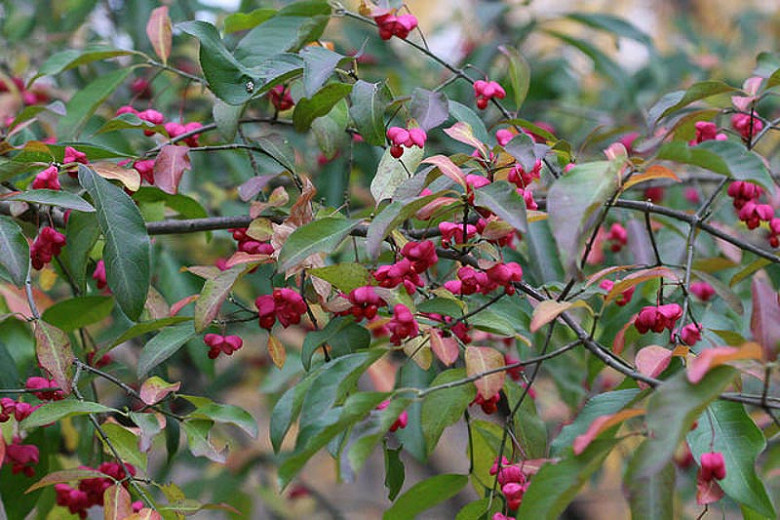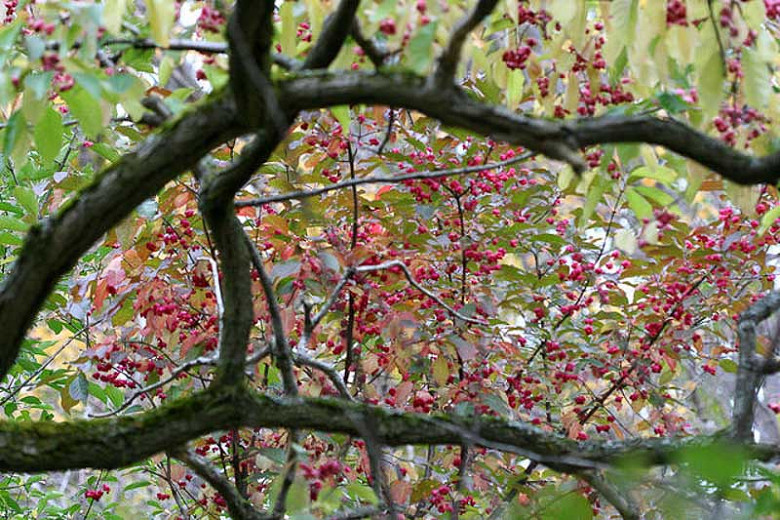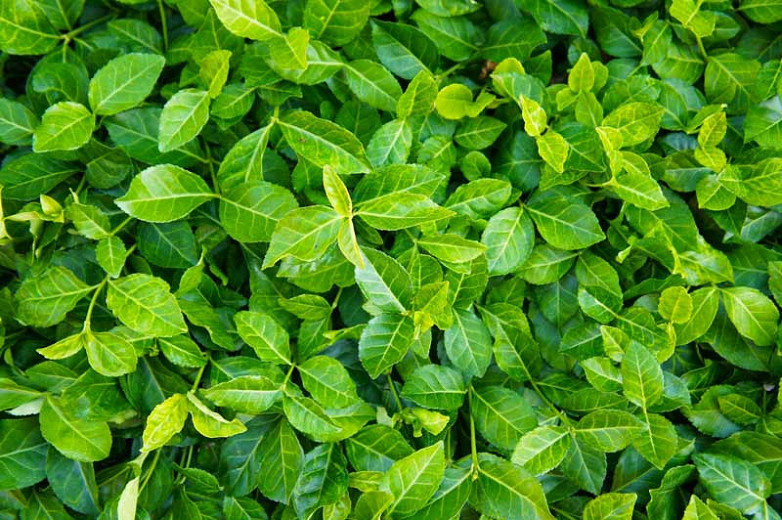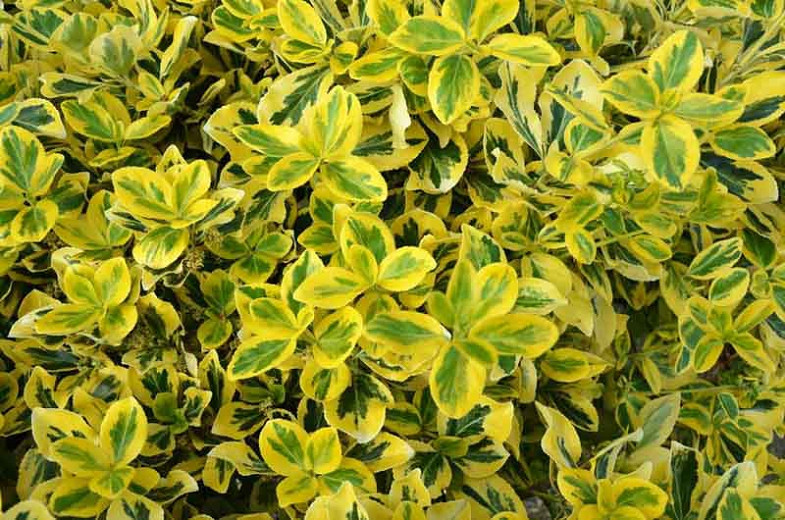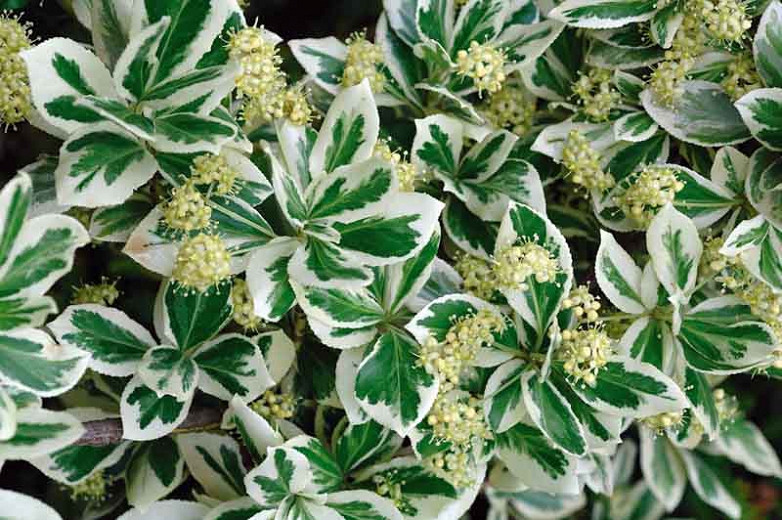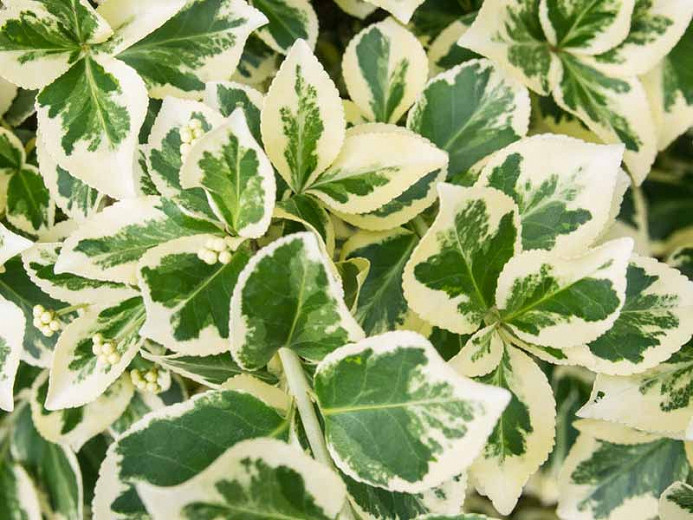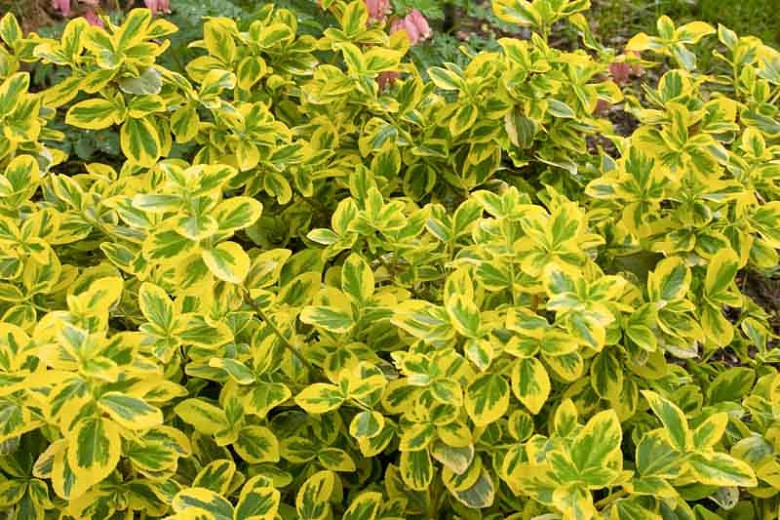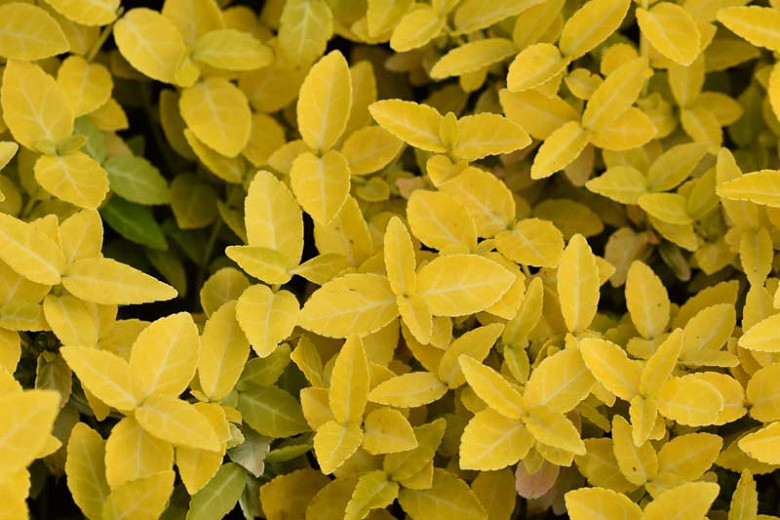Euonymus atropurpureus (Eastern Wahoo)
Noted for its very ornamental red berries and attractive fall color, Euonymus atropurpureus (Eastern Wahoo) is a very adaptable, upright, spreading, deciduous shrub or small tree. In late spring to early summer, a profusion of tiny, maroon purple flowers are borne in small forking cymes of 7-20 flowers and last about a month. The flowers are replaced by light pink to pale purple, 4-lobed seed capsules that mature during the fall and become crimson. At this time, each seed capsule splits open to reveal scarlet-coated seeds which hang on far into winter. They are a preferred bird food during winter months. The foliage of elliptic, lime-green leaves turns bright red in fall. Adding a bold splash of color in the fall and winter, Eastern Wahoo is an excellent North American native and a lovely substitute for the flamboyant burning Bush (Euonymus alatus) in parts of the USA where the latter is invasive.
- Grows up to 12-20 ft. tall (3.6-6 m) with a spread of 15-25 ft. (4.5-7.5 m). This woody plant reproduces by reseeding itself.
- A full sun to part shade lover, this plant is easily grown in average, medium moisture, well-drained soils. While full shade is tolerated, the best fruit production generally occurs in full sun. Tolerates a wide range of soils excluding boggy and wet soils.
- Winner of the GreatPlants award, which is a joint effort between the Nebraska Nursery, Landscape Association and the Nebraska Statewide Arboretum. The goal of this award is to identify superior ornamental landscape plants that meet the challenging growing conditions of the region.
- Generally pest and disease free, but watch for scale.
- Attracts birds and wildlife
- Mass in woodland gardens, naturalized areas or as informal hedge or screen.
- Native primarily to the Midwestern United States, but its range extends from southern Ontario south to northern Florida and Texas
- All parts of the plant are poisonous if ingested.
- Toxic to dogs, toxic to cats, toxic to horses.
Requirements
| Hardiness | 3 – 7 |
|---|---|
| Climate Zones | 4, 5, 6, 7, 8, 9, 14, 15, 16 |
| Plant Type | Shrubs, Trees |
| Plant Family | Euonymus |
| Exposure | Full Sun, Partial Sun |
| Season of Interest | Spring (Late)Summer (Early,Mid,Late)FallWinter |
| Height | 12' – 20' (3.6m – 6m) |
| Spread | 15' – 25' (4.5m – 7.5m) |
| Water Needs | Average |
| Maintenance | Low |
| Soil Type | Chalk, Clay, Loam, Sand |
| Soil pH | Acid, Alkaline, Neutral |
| Soil Drainage | Moist but Well-Drained, Well-Drained |
| Characteristics | Plant of Merit, Showy |
| Native Plants | United States, Midwest, Illinois, Indiana, Iowa, Kansas, Michigan, Minnesota, Missouri, Nebraska, North Dakota, Ohio, South Dakota, Wisconsin, Northeast, Connecticut, Delaware, Maine, Massachusetts, Maryland, New Hampshire, New Jersey, New York, Pennsylvania, Rhode Island, Rocky Mountains, Montana, Southeast, Alabama, Arkansas, Florida, Georgia, Kentucky, Louisiana, Mississippi, North Carolina, South Carolina, Tennessee, Virginia, West Virginia, Southwest, Oklahoma, Texas |
| Attracts | Birds |
| Garden Uses | Hedges and Screens |
| Garden Styles | Informal and Cottage, Prairie and Meadow |
